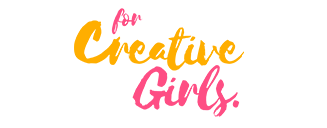Managing a creative space shared by multiple artists and designers is a unique challenge. From coordinating access to ensuring that everyone has the resources they need, the logistics can get complicated.
Fortunately, a range of tools and systems can help streamline these processes, making creative collaboration smoother and more secure.

Photo by Al ghazali.
Effective Scheduling Systems
One of the fundamental aspects of managing a multi-user space effectively is scheduling. Ensuring everyone has access to the space and resources when needed requires a robust system. Digital calendar tools like Google Calendar can be invaluable for this. They allow users to book time slots for specific areas or equipment, reducing conflicts and helping everyone plan their projects more efficiently.
Specialised software supporting resource booking and project timelines can help in more complex environments. These tools often come with features that handle cancellations, reminders, and adjustments, which are crucial for dynamic creative settings where plans can change frequently.
Access Control Technologies
Security is a major concern in spaces with valuable tools and artworks. Key management systems like KEYper Systems provide a secure way to handle physical keys or access cards, ensuring that only authorised individuals can access certain parts of the building or specific equipment. This not only helps in preventing loss and theft but also in managing liability by tracking who accessed the space and when.
Modern access control systems can also integrate with other tech tools, providing a seamless way to monitor and manage entry remotely. For instance, systems that use key cards or biometrics can record entry and exit times, which is useful for tracking usage patterns and security.
Related Feature – Meet Recess, An Artist Workspace that Fosters Interaction Between the Public & Artists.
Communication Tools
Clear communication is essential in a shared creative space, where collaboration and feedback are part of everyday life. Tools like Slack or Microsoft Teams enable real-time messaging and file sharing, keeping everyone in the loop regardless of their physical presence in the space.
These platforms can also be integrated with other tools, such as scheduling systems or project management software, creating a central hub for all communications related to the space. This ensures that all members, whether they are in-house artists or external collaborators, stay informed and engaged.
Inventory Management Software
Keeping track of supplies and equipment is crucial in a multi-user creative space. Inventory management software can help keep tabs on available materials, who’s using what, and when restocking is needed. This is particularly important in environments like shared art studios or maker spaces, where equipment and materials are costly and essential for various projects.
These systems can alert managers when supplies are low, track usage rates, and even automate reordering of materials. Some advanced systems offer barcode scanning or RFID technology for easy check-in and check-out of items, reducing errors and saving time.
Feedback and Review Platforms
Finally, fostering a culture of continuous improvement requires mechanisms for feedback. Digital platforms that facilitate anonymous comments or suggestions can be very useful. These tools encourage open and honest feedback, which is invaluable for addressing issues and enhancing the creative environment.
Implementing a simple system for users to provide feedback on the space, resources, or administration can significantly improve how the space operates. Regular review sessions where this feedback is discussed can help ensure the space evolves in line with its users’ needs.
Running a multi-user creative space effectively demands more than good intentions; it requires a solid foundation of tools and technologies to manage time, resources, and communication.
By integrating systems like digital calendars, access control, communication platforms, inventory management, and feedback tools, managers can create an environment that secures and stimulates creative collaboration.





